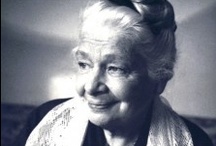Journal of Humanistic Psychology Vol. 18, No 2, Spnng 1978
Like so many teachers, I complain that people do not seem to understand my basic goals, the fundamental purposes for which Rolfing has been developed. In an effort to lessen this type of frustration, I offer the following summary of Rolfing ideas, purposes, and developments.
First, let me reiterate what I have often said before: I am not primarily interested in the relief of symptoms, either physical or mental. When Rolfees tell of the; wonderful, unbelievable; symptom alleviation they have experienced, it may seem strange that I do not accept symptom alleviation as a major goal. However, I am more fundamentally interested in the potential of humans, and human potential goes far beyond the mere palliation of symptoms.
Today, Rolfing is being accepted as one of the most basic, reliable means of developing whatever psychological as well as physical potential is latent in any given human. By what route did Rolfing reach this particular eminence? We assume that human beings are, as a species, evolving toward verticality. What intellectual considerations speed us on our way toward understanding the value of this verticality?
The bony structure is less subject to capricious change than soft tissue. Rolfers have heard me say over and over that the bones per se are not the basic determinants of body structure, that the organ of structure is the collagen & body of connective, so-called “soft tissue”. Bones are where they are and as they are to separate and stabilize the softer tissues which, in point of fact, play the more significant role in physical organization. In spite of this, bones must be recognized as relatively stable, fundamental elements of structure. As we observe the blueprint of the bones, it becomes increasingly apparent that the softer tissues need to be in certain patterned relations to each other for the bones to perform their role most effectively as separating and particularly as relating elements. Thus, joints attain a highly significant place in the body economy.
Now, the important question which I asked many years ago, and to which I am still seeking an answer, is this: What kind of organism will develop if these body parts are appropriately related? What happens when soft tissue and related bone structure actually function in the positions in space which their architectural design suggests as most appropriate and which contributes most effectively to establishing the vertical? The vertical in human structure is the outcome of our proprioceptive, sensory appreciation of the gravity pull of the earth. Unconsciously, as well as consciously, we feel this pull and respond to it.
There is a subtle but compelling concept involved here: Intellectual formulation can, and in this place does, arise out of sensory awareness; our appreciation of the vertical evolves from our perception of the energy field, the gravity pull of the earth. Our generation is beginning to appreciate that we have here a touchstone which can be taken into all parts of our world of ideas. We are finding that we can evaluate the validity of some intellectual concepts through information received from our senses as well as from that coming from our intellect.
Humans have always developed in the gravity pull of the earth and still live within it. We must make our peace with this field of energy. To the extent that we fail to make peace and mistakenly carry on a war, gravity wins every time. The energy of this field can enhance or dissipate the energy of the individual. You cannot change the position of the energy field of the Earth in space, but you can change the energy field of the person.
The question remains: To what extent can Rolfers create a small population able to live within the gravity field without an on-going, everlasting war, without the constant expenditure of precious human energy merely to carry on life within the gravity field: If we can create such a population, what will be its characteristics? I am not interested solely in physical structure, although it is really of basic importance especially in terms of physiological well-being. What will be the psychological and emotional characteristics, the behavior both of the individual and of a group composed of such individuals? How will these more vertical, demonstrably more conscious individuals compare with the random, less conscious humans who tread the surface of the earth today?
Is it perhaps too far-fetched to wonder whether one of the tap-roots of human aggression and underlying fear may be the continuous sense of insecurity which random humans unconsciously feel with reference to their gravity environment? The physical and emotional impact of gravity is felt at the moment of birth, as Leboyer has emphasized, and certainly continues with the first attempts at verticality (i.e., standing), and the first walking steps.
Be that as it may, I see no means of gaining answers to these suggestive and really important questions in the abstract. The answer will come when we can create such a population and observe it over an extended period of time. At this point, we are justified only in looking with satisfaction at the reports coming in from people who have experienced some approach to the integrating vertical. The appropriate integration of our bodies in the gravity field is a long-term evolutionary project. Perhaps not even the first page has yet been turned. It is possible that we are seeing here the first conscious attempt at evolution made by any species in modem times.






